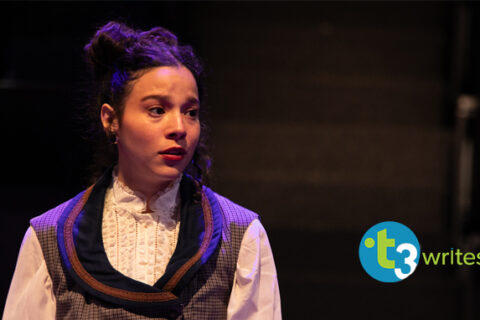An Actor’s Perspective on Color and Casting
By Vanessa DeSilvio with introduction by T3Writes editor, Kat Edwards
As a producer, there’s a lot that I could say about color-conscious casting having been involved in the process for several years. But even though I am a producer of color, I still don’t have any idea what being an actor of color is like. So, I decided to invite The Moors actress, Vanessa DeSilvio, to talk about her experiences.
…
“Latina. In her 30s, aggressive and hard-working”
“Female, Latina Mom, 20s-30s, Polished professional look.”
“Latina Female, 30s. Daughter of the last of the landed Spanish aristocracy”
These are examples of the roles I often audition for. I look Latina. I am Latina. I was raised in a Venezuelan household with a strong connection to my Venezuelan heritage. I speak fluent Spanish and speak it to my sons. I strongly identify with my Latinx roots.
I often get asked, “Don’t you feel limited when you only audition for Latina roles?” It is a valid question. Actors are trained to transform into roles that are different from themselves. However, especially in the commercial and film business, the reality is, you are what you are when you walk into that audition. But I personally feel empowered when I audition for roles written for Latinas. In my mind, I represent a group of people who have important stories to tell. So I am eager to audition for roles that are written for me. Whenever a theater announces their new season, the first thing I do is pick out the plays that have Latina roles.
That being said, it is exciting to have opportunities to audition for roles other than just “the Latina.” And theatre often presents those opportunities. Nowadays, playwrights will specify in the breakdown of their characters that they wish for multi-ethnic casting. Theatre directors often announce that they wish to see actors of any ethnicity at auditions.
When I auditioned for The Moors at Theatre Three, I saw that Jen Silverman, the playwright, includes a note: “Casting is best when very diverse. The sisters do not have to be played by actors of the same ethnicity. There is no version in which only the animals are played by actors of color.”
Some theatres call this “color-blind casting” while others prefer the term “color-conscious casting.” Instead of being blind to the skin color, the theater is choosing to cast persons of color in specific roles in order to further deepen the story. Whatever you want to call it, what excites me is that theatres are encouraging actors of color to audition and to confidently see themselves playing any and all roles.
When I was cast as Emilie in The Moors, I saw it as a wonderful opportunity to take on a leading lady role; one that has a powerful, transformational journey. It is certainly exciting for me to take on this type of role and to embody this journey that any person of any skin color can connect to.
My hope is that, when audience members see a show like The Moors, with the casting choices made, they can put aside our surface differences to see theatre’s expression of our universal core: desire, struggle, fear, humor, passion, joy. Theatre’s mission can then come to fruition, telling a story that reaches all audiences, no matter their differences.
…
Catch Vanessa DeSilvio’s performance as Emilie in The Moors. You have until November 18th, so get your tickets SOON!



nice post! am looking forward to read your future post, great weekend ahead!